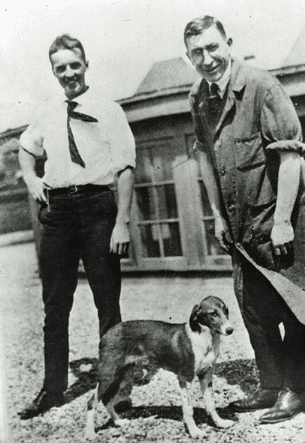Shrestha Saraf
Sutton Coldfield, United Kingdom
Sanjay Saraf
Sudarshan Ramachandran
Birmingham, United Kingdom

As we approach the centenary of the isolation, purification, and clinical use of insulin, it is an appropriate moment to reflect on the impact of this hormone on the management of diabetes. Diabetes can be defined as a heterogeneous group of conditions resulting in high blood sugar. The first known reference to a rare disease associated with rapid weight loss and polyuria was around 1550 BC in Egypt.1,2 Apollonius of Memphis called the condition diabetes in 250 BC.3 The role of sugar was identified by investigators such as Matthew Dobson and Claude Bernard. Since no medical therapy existed, management relied on dietary changes: fasting and restriction of sugar, starch, and calories.4 Insulin was a lifeline for individuals for whom diabetes was a death sentence.
The impact of insulin is summed up by the story of Elizabeth Hughes Gossett, a young girl with diabetes who was able to live to adulthood.5 She was born in 1907 in New York where her father, Charles Evans Hughes, was the state’s governor. At the age of eleven, Elizabeth developed type 1 diabetes, and by the age of fourteen her heath had begun to deteriorate. In 1922 her mother, Antoinette Carter Hughes, heard that insulin had been purified in Toronto and contacted Dr. Frederick Banting. Elizabeth received the experimental hormone and her health was transformed. She graduated from Barnard College in 1929 and lived to the age of seventy-three.
What led to the identification and purification of insulin? In 1921 in Toronto, Canada, Dr. Frederick Banting and medical student Charles Best performed experiments on the pancreas of dogs in the laboratory of Professor John Macleod.6 After removing the pancreas, the dogs showed symptoms of diabetes. The pancreas was then sliced and ground into an injectable extract and administered to the dogs multiple times per day, leading to reversal of the symptoms. Following this initial promise, Macleod sought further evidence using the pancreas of cows to enable isolation and purification of the hormone. Dr. J.B. Collip, a biochemist, joined the research team to help purify the insulin for human testing. Banting and Best tested the insulin on themselves and developed symptoms of hypoglycemia. Insulin was considered to be ready for human use after work on dose titration and developing methods to treat hypoglycemia. In 1922, insulin was administered to fourteen-year-old Leonard Thompson who had type 1 diabetes.7,8 The first dose resulted in a sterile abscess, no effect on ketosis, and mild blood glucose reduction.8 Subsequent doses purified by Collip proved successful and Thompson lived for another thirteen years before dying from pneumonia.9
Fifteen years after insulin was adopted as a treatment for diabetes, Danish physician Hans Christian Hagedorn added protamine to prolong its action.10 NPH (neutral protamine Hagedorn) insulin, an intermediate acting insulin, was first marketed in 1950 by Danish pharmaceutical company Novo Nordisk. In 1955 British biochemist Frederick Sanger was the first to fully sequence insulin, for which he received the Nobel Prize for Chemistry in 1958. In 1963 insulin became the first human protein to be chemically synthesized. Synthetic “human” insulin developed by recombinant DNA technique was produced in 1978 by biotechnology firm Genentech.
Traditionally insulin was injected with a needle and syringe. In 1985 Novo Nordisk introduced the insulin pen as a delivery device. Insulin delivery was further revolutionized with the introduction of the first insulin pump. In 1996 Eli Lilly marketed analogue insulin, a laboratory synthesized, genetically modified form with altered pharmacokinetics and pharmacodynamics leading to benefits in blood sugar management. In 2013 the “artificial pancreas,” which paired the insulin pump with a continuous glucose monitor, was created by the University of Cambridge. This type of insulin therapy more closely mimicked normal physiology and led to significant lifestyle benefits for patients. In 2015, Dr. Edward Damiano introduced iLet, a bionic pancreas device that delivers both insulin and glucagon every five minutes as required.10 Another therapeutic avenue being developed is islet cell transplants, following the first successful trial of human islet allotransplantation resulting in long-term reversal of diabetes performed at the University of Pittsburgh in 1990.11
Over the past one hundred years, the management of diabetes has come a long way, with many of the advances based on developments in insulin. This has vastly improved the prognosis and lifespan for those living with diabetes. Thanks to innovative researchers such as Banting, Best, Macleod, and Collip, hope exists for all the Elizabeth Hughes Gossetts in the world.
References
- Oubre AY, Carlson TJ, King SR, Reaven GM. From plant to patient: an ethnomedical approach to the identification of new drugs for the treatment of NIDDM. Diabetologia. 1997;40:614–7.
- Marwood S. Diabetes mellitus – some reflections. J R Coll Gen Pract. 1973;23:38–45.
- https://www.diabetes.co.uk/diabetes-history.html- Accessed on 09/08/2021.
- Mazur A. Why were “starvation diets” promoted for diabetes in the pre-insulin period? Nutr J. 2011;10:23.
- https://en.wikipedia.org/wiki/Elizabeth_Hughes_Gossett- Accesses on 09/08/2021.
- Celeste C. Quianzon and Issam Cheikh. History of insulin. J Community Hosp Intern Med Perspect. 2012; 2(2): 10.3402/jchimp.v2i2.18701.
- https://www.diabetes.co.uk/insulin/history-of-insulin.html- Accessed 09/082021.
- Ignazio Vecchio,Cristina Tornali, Nicola Luigi Bragazzi, Mariano Martini. The Discovery of Insulin: An Important Milestone in the History of Medicine. Front Endocrinol (Lausanne). 2018; 9: 613.
- https://www.diabetes.co.uk/pioneers/leonard-thompson.html- Accessed 08 August 2021.
- https://www.diabetes.co.uk/insulin/history-of-insulin.html- Accessed on 10/08/2021.
- Andreas G. Tzakis, Camillo Ricordi, Rodolfo Alejandro, Yijun Zeng, John J. Fung, Satoru Todo, Anthony J. Demetris, Daniel H. Mintz, and Thomas E. Starzl. Pancreatic islet transplantation after upper abdominal exenteration and liver replacement. Lancet. 1990 Aug 18; 336(8712): 402–405.
SHRESTHA SARAF is a current A level student who aspires to study medicine at university. She is passionate about science and science-related topics.
SANJAY SARAF is a Consultant in Diabetes & Endocrinology at University Hospitals Birmingham Foundation Trust, UK
SUDARSHAN RAMACHANDRAN is a Professor of Metabolic Medicine working at University Hospitals Birmingham and University Hospitals of North Midlands.
